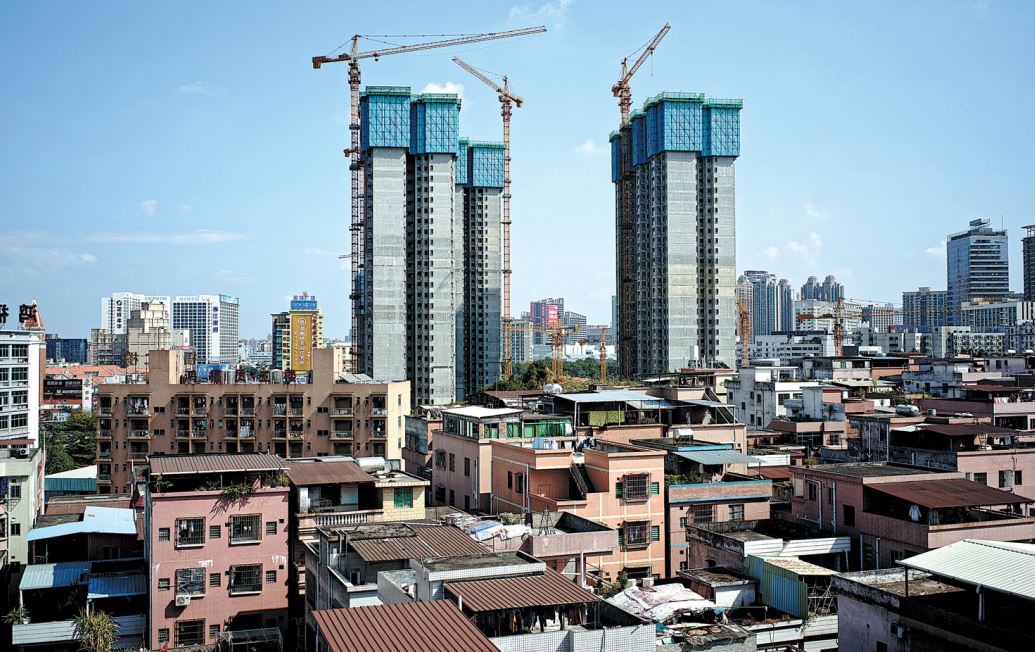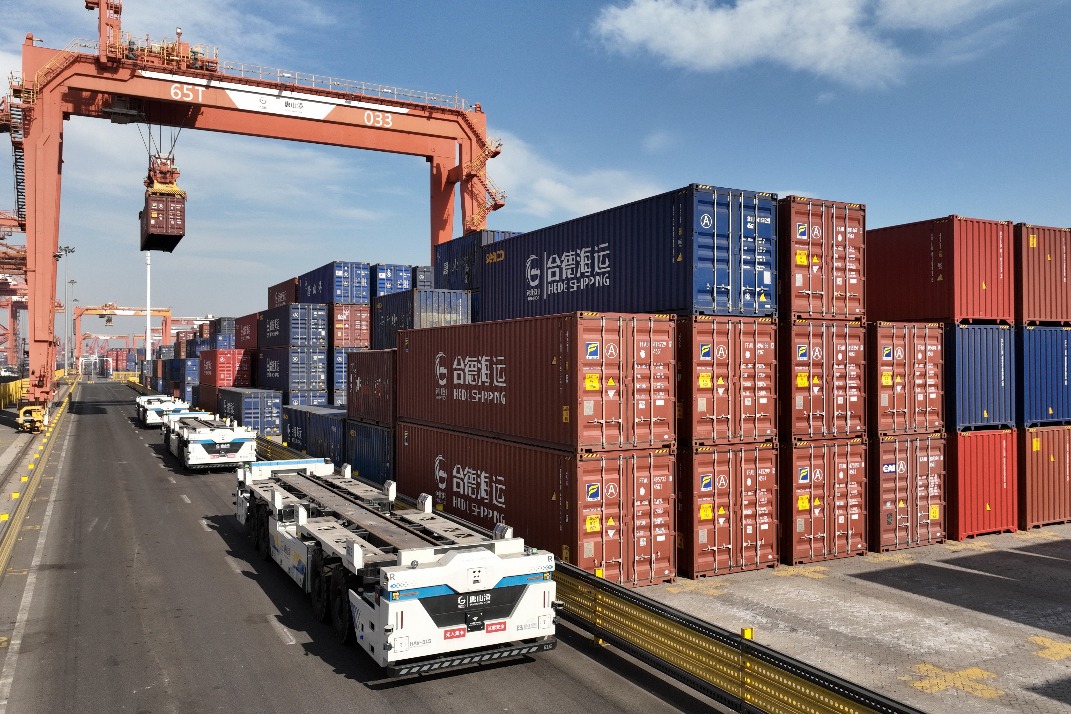Factors that can sustain healthy development of China's housing market


Owing to industrial development, population migration and better medical, education and eldercare conditions, first- and second-tier cities in China have experienced the sharpest increases in housing prices.
Shanghai, for example, has a more balanced industrial structure with services accounting for over 70 percent of its GDP, and its advantages in terms of education, medical services, safety and public utilities were clearly evident during the pandemic. As a result, the city's housing market attracts not only local buyers but also those from across the country, and this has been driving prices higher.
Shanghai has a population of 25 million and a land area of 6,340 square kilometers. By comparison, Beijing has an area of 16,000 sq km and a population of less than 22 million. The high housing prices in Beijing are not a result of land shortage-rather, they are a result of land-related policy stipulations.
Shanghai, Beijing and other megacities adopted their land auction systems from Hong Kong, which in turn learned it from the United Kingdom. Under this system, those that give the highest quotations get the land. Thus, land prices have kept rising, which in turn has led to higher home prices.
In my view, the development of China's real estate market in the past 20 years should no longer be explained in terms of conventional housing market cycles. These cycles involve processes of prosperity, decline, recession and recovery, and the whole process may cover eight to 10 years. There are cycles in housing markets everywhere in the world. In China, however, there has not been such a cycle in the past 20 years.
One of the most important reasons housing prices have continued to rise is that we have not simultaneously regulated supply and demand, but have instead focused on demand-side controls, with those on the supply side playing a smaller role. This has resulted in relatively insufficient increases in available land, which have fallen short compared with increases in the urban population.
Demand-side controls, however, are often only effective over the short term, while long-term mitigation can only be realized through changes on the supply side. Supply-side controls are also more effective in stabilizing public expectations-an important determinant upon which home prices hinge.
Currently, national policies for regulating the real estate market can be summarized by two principles: "Houses are for living in, not for speculation" and "Land prices, housing prices and public expectations must be stabilized".
The stabilization of housing prices depends on the stabilization of land prices, since the latter accounts for the bulk of the former. Since 2015, land costs accounted for an average of 40 percent of housing prices in large cities.
In the real estate industry, it is extremely difficult to distinguish between investment and speculative housing purchases for two reasons: the first is a lack of alternative investment channels; the second relates to traditional Chinese culture, in which homeownership is of great significance. As a result, many families own two or more houses. This cultural emphasis on homeownership is an ideological issue.
Increasing land supply seems complicated
In recent years, land has been supplied by means of auctions where those who submit the highest bid get the land. This has pushed up land prices and resulted in a cohort of "land tycoons". Earlier this year, the Ministry of Natural Resources said residential plots in key cities shall be supplied via collective announcements no more than three times each year. The main purpose of this policy is to stabilize housing prices by stabilizing land prices.
The first collective lease announcement for residential land was recently issued in Shanghai, including 52 lots in total. The new bidding rules are mainly as follows: starting prices, break-off prices and maximum prices should be set appropriately under an interactive mechanism between land and housing prices. If all quotations are below the break-off price, the party that offers the highest quotation will win; if they are above the break-off price, all bidders shall enter a round of offering in writing, in which quotations should be capped at the highest price, and the bidder whose quotation is closest to the average price in this round shall be the winner. For this batch of land lots, the highest price was set at around 110 percent of the starting price. This may serve to effectively cap land prices.
In 2017, the government introduced a policy stating that cities with acute imbalances between supply and demand should increase the supply of land for housing, especially for common residential housing purposes.
In Jiangsu and Zhejiang provinces, for instance, medium and small developers have swarmed into third- and fourth-tier cities due to the difficulty of land acquisition in first- and second-tier cities. This has led to massive increases in land prices, putting a constraint on the integrated development of the Yangtze River Delta. The delta is the most ideal location for marshaling industrial resources, and the rise in land prices will push up industrial costs there.
In the future, the prescription of land lease policies should be connected with the demographic, industrial and commercial indexes of cities, subject to dynamic adjustments and monitoring. Land supply, especially for residential purposes, should be increased in cities with population inflows, and reduced in those with population outflows. In addition, indexes for the supply of residential land can be adjusted on a national level.
Currently, many cities and provinces have established their "red lines" for land supply, which have restrained the amount of land controlled by the central government. Local governments, however, lack the ability to coordinate land resources cross-regionally. Therefore, coordination needs to be realized at the national level.
Relationship between real estate, and economy must be viewed dialectically
The real estate sector still plays a vital role in economic growth. At the beginning of last year, the outbreak of the pandemic had a significant impact on property sales, yet figures rebounded in the months that followed. Investment in the real estate sector has a high resilience compared with infrastructure and manufacturing, and plays a major role in stabilizing the economy.
However, we need to see the hazards associated with housing prices. On the one hand, high home prices can sap the economy of its development potential. As land is an indispensable element in all economic activity, a rise in land prices translates to higher costs all around. At the same time, high housing prices can exacerbate the wealth gap and become the cause of many social problems.
These days, there is a popular catchphrase describing the tendency of young people to stop striving and "lay back". Such a mentality is directly attributable to high home prices. If housing prices are low or relatively stable, young people will be more confident in striving toward the future and there might not be such a phenomenon.
In the long term, increasing house prices must be kept below that of per capita income. Therefore, the principles that "Housing prices, land prices and public expectations must be stabilized" and "Houses are for living in, not for speculation" must be adhered to. The housing market cannot be used to trigger short-term economic growth. Against the impact of COVID-19, the Chinese economy experienced rarely-seen negative growth, yet the government has avoided using the real estate sector to stimulate the economy for short-term gains.
The current overarching direction for controlling the Chinese real estate sector is correct, but more time is needed to absorb and address the problems that have accumulated over the past 20 years. Focus on regulations and control must go in tandem with an emphasis on the development of the real economy. Meanwhile, boosting income levels will help contribute to the healthy and sustained development of China's housing market.
The writer is an adjunct professor of economics and finance at China Europe International Business School.
The views don't necessarily reflect those of China Daily.




































